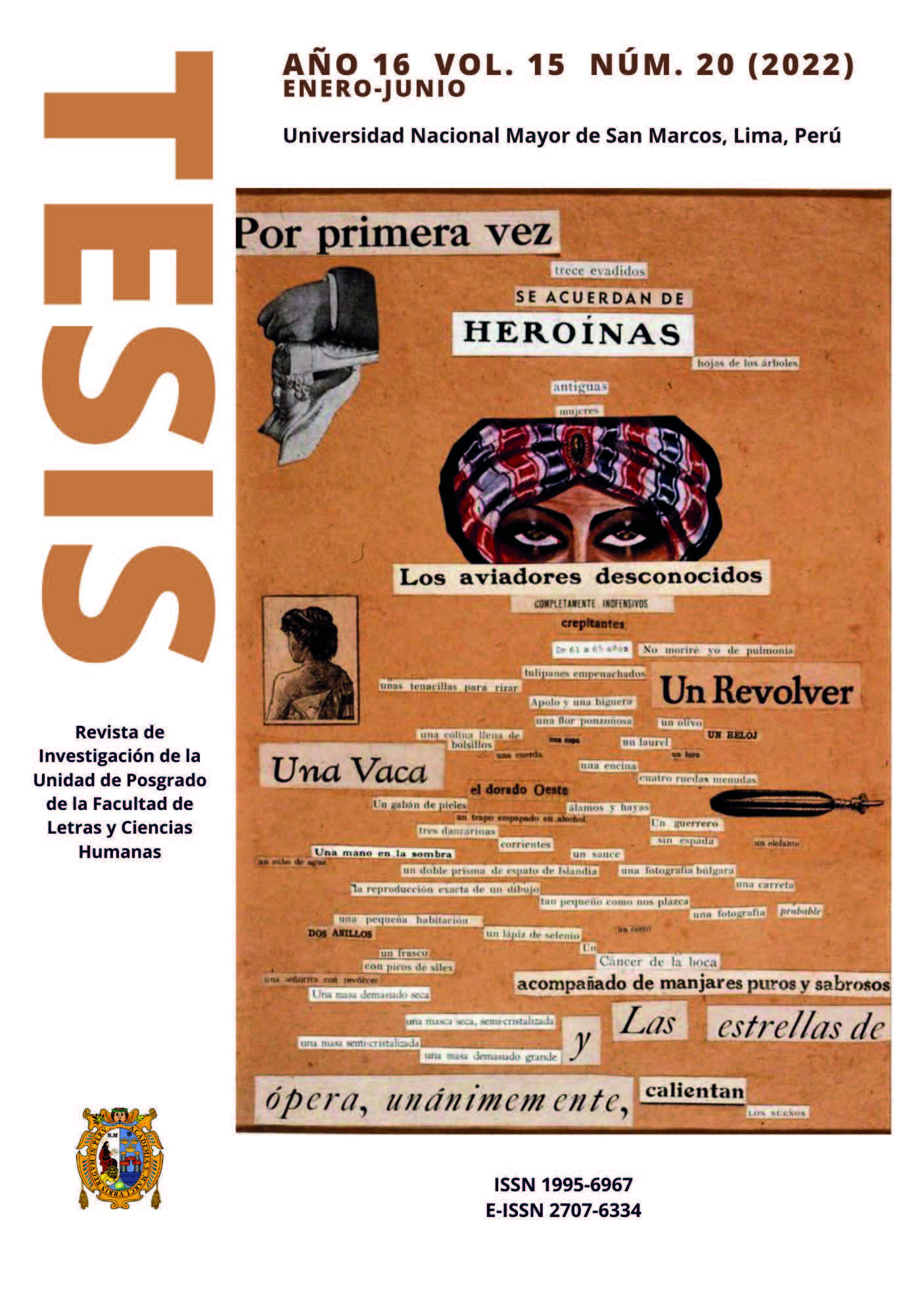The dramaturgical setting in Viejas ilusiones by Eduardo Rovner
DOI:
https://doi.org/10.15381/tesis.v15i20.23512Keywords:
Eduardo Rovner, comedy, comic character, Latin American playwriting, dramatic conflict, Argentine playwritingAbstract
The article proposes an approach to Viejas ilusiones, work of the playwright Eduardo Rovner. It will seek to analyze the main dramaturgical tools and strategies applied in the text: how dramatic tension is generated, how humor operates, what criteria are applied in character profiling and, in general, how these and other mechanisms are combined in the play. The study concludes that the play builds dramatic tension through the simultaneous use of three levels of conflict. Also, that the age proposal of the characters constitutes a comic premise that opens a spectrum of games and perspectives that sustain humor, promote theatricality and stimulate the viewer’s awareness of artifice. Finally, it is suggested that one of Rovner’s contributions consists in having resemantized the genre of the European tragicomic farce to portray, in a humorous way, the manias and contradictions of Latin American society.
References
Alegría, A. (2014). Manual para escribir teatro y entender una obra dramática. [Documento inédito]. Vivero de Dramaturgia.
Aristóteles (1999). Poética. Editorial Tilde.
Attardo, S. (Ed.). (2014). Encyclopedia of humor studies. SAGE Publications.
Barthes, R. (2003) Ensayos críticos. Seix Barral.
Brook, P. El espacio vacío. Península.
De María, C. [Cultura24tv]. (22 de mayo de 2014). Curso virtual: Conceptos básicos de dramaturgia. 1/3 [video]. https://www.youtube.com/watch?v=6oudFJm_2Uk
Fiorito, G. (25 de marzo de 2014a). 2 Viejas ilusiones parte 1 [video]. https://www.youtube.com/watch?v=V8yoQjHZlo8&t=822s
Fiorito, G. (25 de marzo de 2014b) 2 Viejas ilusiones parte 2 [video]. https://www.youtube.com/watch?v=q2u7Hc4dr1o
Jeffreys, S. (2019). Playwriting. Structure, character, how and what to write. Nick Hern Books. https://es.scribd.com/read/430468413/Playwriting-Structure-Character-How-and-What-to-Write
Martín-Barbero, J. (1987). Televisión, melodrama y vida cotidiana. Signo y Pensamiento, 6(11), 59-72. https://revistas.javeriana.edu.co/index.php/signoypensamiento/article/view/5741
Martínez Paramio, A. (2011). Escribir teatro. Una guía práctica para crear textos dramáticos. Alba.
McKee, R. (2009). El guion. Sustancia, estructura, estilo y principios de la escritura de guiones. Alba Editorial.
Pavis, P. (1988). Diccionario del teatro. Dramaturgia, estética, semiología. Paidós.
Pellettieri, O. (2004). Nuevas tendencias del teatro argentino. Assaig de Teatre. Revista de l’associació d’investigació i experimentació teatral, 43, 33-49.
Ventura, L. (2019). Eduardo Rovner (1942-2019): Réquiem por el dramaturgo que escribía sobre pentagramas entre sombras y fantasmas. Anagnórisis. Revista de investigación teatral, 20, 332-353. http://anagnorisis.es/pdfs/n20/Ventura_num20(332-353).pdf
Vera Latorre, C. (2021) La configuración dramatúrgica en La comunidad de la naranja de Patricia Romero. Argus-a, XI(41). http://www.argus-a.com/publicacion/1589-la-configuracion-dramaturgica-en-la-comunidad-de-la-naranja-de-patricia-romero.html
Vorhaus, J. (2005). Cómo orquestar una comedia. Los recursos más serios para crear los gags, monólogos y textos cómicos más desternillantes. Alba.
Downloads
Published
Issue
Section
License
Copyright (c) 2022 César Wilfredo Vera Latorre

This work is licensed under a Creative Commons Attribution 4.0 International License.
THE AUTHORS RETAIN THEIR RIGHTS:
(a) The authors retain their trademark and patent rights, and also on any process or procedure described in the article.
(b) The authors retain the right to share, copy, distribute, execute and publicly communicate the article published in Tesis (Lima) (in example, depositing the article in an institutional repository or publish it in a book), with recognition of its initial publication in the Tesis (Lima).
(c) The authors retain the right to make a later publication of their work, to use the article or any part of it (for example: a compilation of their works, notes for conferences, thesis, or for a book), provided that they indicate the source of publication (authors of the work, magazine, volume, number and date).














